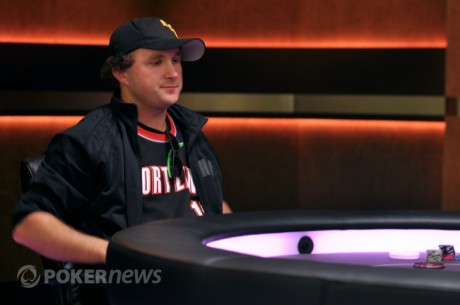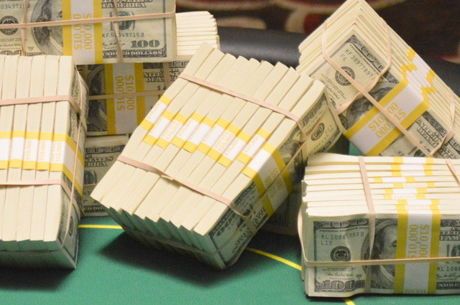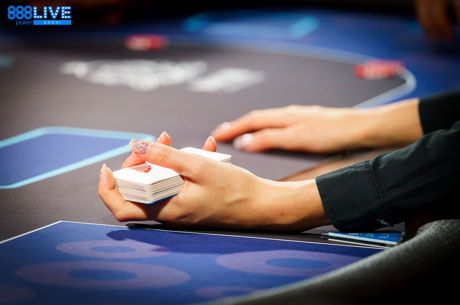Strategy Vault: Floating vs. Bluff-Raising with Andrew Seidman

Digging deep into the PokerNews strategy archives can unearth some buried treasure for seekers of strategy gems. This edition of the Strategy Vault revisits a conversation from a while back with poker pro, coach, and author Andrew “BalugaWhale” Seidman about a common postflop situation in no-limit hold’em:
- a player raises preflop and you decide to flat-call with position
- the flop misses your hand
- your opponent makes a continuation bet
You have three options — fold, call (or “float” with a plan to take the hand on a later street), or raise (as a bluff). In the following discussion, Seidman weighs various factors that might encourage floating or bluff-raising in this situation. As Seidman explains, the decision has a lot to do with your particular read on the c-betting opponent's style and hand range and how you think that player will respond to your action.
PokerNews: Let’s focus on the specific situation in which we’ve flatted a raise in position preflop and are now facing a continuation bet. Of course, against different types of opponents, we are flatting with different ranges preflop. How does that affect your thinking going to postflop play?
Andrew Seidman: First and foremost, against a weaker opponent, I’m probably not looking to bluff too much because I’m going to end up at showdown. So if I flop a draw, I’ll just call and not raise. If I flop nothing, I’ll just fold. Weaker opponents make it easy on you.
Preflop, a big thing that goes into my decision-making over whether to flat or reraise would be the people in the blinds. My range would be a lot wider for flatting preflop if there were weaker players in the blinds where I could get better value by flatting and hoping to play a pot with them than I could by three-betting the original raiser.
Let’s say we have a fish in the blinds and a reg opens, and I call my wide range on the button and the fish folds. Then the first question I’m asking myself when facing the continuation bet is how often does this guy c-bet against me? This is an important question that goes beyond stats. If I see him check-fold against me, or check-call some weak top pair or second pair or something, those affect whether or not I’ll play back, and how I’ll do it.
For example, I’m way more likely to float with equity than raise with equity against somebody who check-folds, simply because he’s more likely to have a big hand, whereas if somebody c-bets all the time, I could bluff him pretty easily off a number of weak things — like ace-high and king-high, or underpairs to the board, etc. — by raising the flop.
How does board texture come into play in your decision making?
First, I am thinking about his nuts-versus-air ratio. So if he has a lot of value combos relative to his air-bluff combos, then raising gets worse.
Can you give an example to illustrate?
Let’s say a loose player opens in the cutoff and I have called from the button, and the board comes down 10♥10♣6♥. He’s a guy who I don’t have a read as someone who check-folds a lot. And let’s also say that I called preflop with a hand like J♠9♠.
It’s tough for him to be value betting that flop, as combos of tens and overpairs are a small percentage of his range relative to other hands. If I think I can get hands like QxJx, KxQx, Ax8x, and 3x3x to fold to a raise, then raising my J♠9♠ becomes good.
My general thought is that if you don’t know whether to bluff-raise the flop or float, you should just raise the flop because you need a good reason to float. For example, let’s say I flop a flush draw on that jack-nine hand — that the flop comes 10♠10♥6♠. Well, most of the time he check-folds, anyway. Sometimes he’ll bet-fold if I put in a raise, but I get a much cheaper price on hitting my draw if I float. Plus, if I raise, my opponent, who is playing out of position, is most likely going to reraise rather than call out-of-position, which of course is not good for me because my opponent would play perfectly against my hand.
On some dry boards, though, it may be better to raise with equity when your opponent is most likely to be bluff-catching. As we’ve discussed before, if your opponent is playing call-or-fold, we want to depolarize and use equity (think, flush draw on the flop). Whereas if he is playing raise or fold, we want to polarize (so, raise jack-nine no pair, no draw and raise the nuts, call everything else).
Can you discuss your last two sentences in a bit more detail for those who are not familiar with the terms “polarize” and “depolarize”?
When we polarize, that means we only raise (or bet) our best-value hands, and hands without any real value such as reraising J♣4♥ preflop. If the other guy reraises, you can just fold, no sweat. So when our opponent never calls us and only either reraises or folds, we can raise that J♣4♥ without worrying.
However, if he starts calling us, we find ourselves in pots with J♣4♥ where we actually have to play poker, and that is not a very good thing. In that case, we need to raise hands that have more value. If our opponent calls our reraises with hands like Jx10x, we should be reraising hands like KxJx, and that’s called depolarization.
So let’s say we do decide to bluff-raise on the flop — what are you considering as far as raise sizes go?
Great question. Raise sizes will affect whether or not we want to be polarized or depolarized. If we make a min-raise, our opponent is likely to call which would mean we should be likely to depolarize. Small raises tend to lead towards us depolarizing. If we make a big raise, our opponent is likely to either raise or fold. So our big raises are more polarized now.
We can break these trends, though. For example, sometimes we can make a min-raise, and our opponent will still play raise-or-fold. Something called a “leverage point” exists at the exact spot where our opponent switches between call-fold and raise-fold.
And finding that leverage point depends on practice and on your knowledge of the player or type of player, right?
In part, yes. A lot of times, though, it will be the same in a lot of common situations.
For example, say we’re playing in a $0.50/$1.00 game online. The cutoff, a loose-aggressive player, opens to $3. We decide to three-bet him. If we make it $12, he’ll definitely play four-bet or fold. But what if we make it $10? Yeah, he’ll still probably only raise or fold. How about $9? $8? We can find a number there somewhere between $7-$9 that will work for most players. In fact, a reraise to, say, $6.50 there will cause a lot of regulars to get confused and play badly.
At what point, or maybe at what stakes, do you have to start worrying about playing against good enough players who will realize that you are making a polarized or depolarized three-bet preflop, or that on certain flops, a raise makes you polarized and they start to exploit you?
Well, most players don’t think outside of the box enough. For example, when I suggested calling three-bets out of position with hands like AxKx, I was flamed on some forums. However, it’s a great way to exploit somebody playing a polarized range against you. Most people’s ranges are pretty clearly identified as polarized or depolarized and just checking hole cards at showdown from time to time will let you know.
Want to stay atop all the latest in the poker world? If so, make sure to get PokerNews updates on your social media outlets. Follow us on Twitter and find us on both Facebook and Google+!









